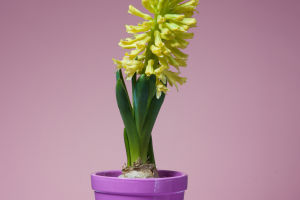Hey Lykkers! Fungi represent a captivating and varied group of organisms that are essential to the functioning of our ecosystem. Unlike plants, fungi do not bloom and lack stems or leaves.
This article delves into the unique characteristics of fungi, their significance in nature, and the various types that exist.
What Are Fungi?
Fungi are a kingdom of lower organisms that are distinct from plants, animals, and bacteria. They are typically non-vascular and non-motile, meaning they cannot move from place to place. Fungi can exist as single-celled organisms, such as yeasts, or as multicellular forms, including mushrooms and molds.They reproduce through spores, which are often microscopic and can be dispersed by wind, water, or animals.
Characteristics of Fungi
Lack of Chlorophyll: Unlike plants, fungi do not contain chlorophyll, the green pigment necessary for photosynthesis. They acquire nutrients by decomposing organic material present in their surroundings.
Cell Structure: The cell walls of fungi are primarily composed of chitin, a complex carbohydrate that provides structural support. Plant cell walls differ in composition, as they are primarily constructed from cellulose.
Reproduction: Fungi can reproduce using both sexual and asexual methods. Asexual reproduction typically takes place via budding or fragmentation, whereas sexual reproduction entails the development of specialized structures that generate spores.
The Importance of Fungi in Ecosystems
Fungi play an essential role in various ecological processes:
Decomposition: Fungi serve as essential decomposers within ecosystems, facilitating the breakdown of dead organic matter and returning nutrients to the soil. This function is crucial for maintaining soil health and promoting plant growth.
Symbiosis: Numerous fungi establish symbiotic associations with plants, referred to as mycorrhizae. This partnership allows plants to absorb nutrients and water more efficiently while fungi receive carbohydrates produced by the plants.
Food Source: Fungi serve as a food source for a variety of organisms, including humans. Edible mushrooms and other fungi are widely consumed, while some fungi produce essential food ingredients like yeast for baking and brewing.
Types of Fungi
Mushrooms: These structures represent the reproductive parts of specific fungi commonly located in forested areas. Varieties include edible types like button mushrooms and wild varieties like chanterelles.
Molds: Commonly seen on bread or fruit, molds are filamentous fungi that can grow rapidly in suitable conditions. Some molds are beneficial, while others can produce toxins.
Yeasts: Yeasts, which are unicellular fungi, play an essential role in food production, especially in the processes of baking and brewing. Saccharomyces cerevisiae is a well-known yeast used for fermenting sugars.
Lichens: A symbiotic relationship between fungi and algae or cyanobacteria, lichens are often found on rocks and trees. They serve as crucial indicators of the health of the environment.
Fungi are remarkable organisms that, despite their lack of blooms, stems, or leaves, contribute significantly to the health of our planet. Their role as decomposers, symbiotic partners, and food sources highlights their importance in ecosystems. Understanding fungi is essential not only for appreciating biodiversity but also for harnessing their potential in various applications, from medicine to agriculture. Embracing the world of fungi opens up a realm of possibilities, reminding us of the intricate connections that sustain life on Earth.


